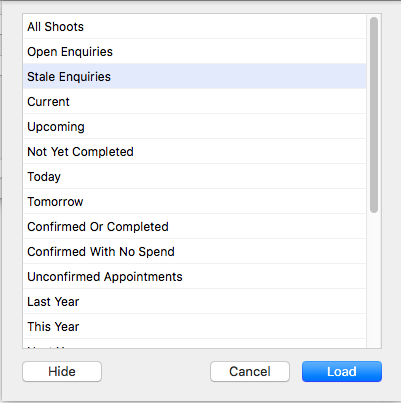Using the Query dialog to dig deep into your data
This is the second instalment of a short series of articles that will be covering how to make the most out of the information that you’ve already entered into Light Blue. That data can tell you a lot about how your business is doing, and help you to take a step back and look at the bigger picture.
The great thing about using Light Blue is that all of the information that you need for this is in one place. In the first article, we talked about Quick Queries, which are saved searches of your current data. These queries are automatically updated and show all of the relevant records that match each saved search.

Using the Query dialog to dig deep into your data
Compared to using Quick Queries, Light Blue’s Query dialog allows you to be much more specific about the information that you’re searching for, and construct your own queries. These queries can be as simple or detailed as you like, and all of our Quick Queries were built in the Query dialog and can be loaded into it.
For example, you may be interested in targeting some of your clients for a particular promotion. For example, all of your portrait clients who’ve spent more than £500. You can narrow down the selection of records that the Query dialog returns by adding extra criteria, as you can see in this screenshot.

Using advanced mode for more detailed queries
In most cases, when you’re building a query and want to add extra criteria, you’re adding them to narrow down the selection of records that Light Blue will find for you. In our first example, we started off with all of our portrait shoots, and then narrowed that down by specifying that we were only interested in those portraits shoots that also spent more than £500.
This is an example of what’s know as an “and” search, where you’re looking for records that match all of your criteria. You also have the option of adding more advanced options to your queries, including “or” operators and grouping parts of your query together using brackets.
We’ll go into more detail on these advanced features in a future article, but for now here’s an example of how you could modify our example query to search for portrait shoots that spent more than £500 or wedding shoots that spent more than £1,000.

Using an existing Quick Query as a starting point for your own custom queries
You may find that our existing Quick Queries are helpful, but that you’d like to refine the search a little more. With the Query dialog, you can load an existing Quick Query to use as a starting point, and then add more criteria to your search.



The “Stale Enquiries” query is shows you all of the unconfirmed shoots that first got in touch more than a month ago, but don’t have any more outstanding tasks.
However, let’s say that you’re only interested in a specific type of shoot you could add that criteria to the query.

Saving queries saves you time!
Everyone runs their photography business in their own particular way, and that means that the information that’s important to you is likely to be different to whatever’s important to the next photographer. Light Blue allows you to add your own queries to your list of Quick Queries, and therefore makes it easy to keep an eye on whatever’s important to you.
To do that, first build your query in the Query dialog. When you’re happy with it, click the “Save Query” button and give your query a name.

More detailed analysis…
So far, we’ve talked about using Quick Queries and the Query dialog to find a selection of records. In the next article in the series, we’ll look at how you can use the List View & Custom Reports to analyse data in more detail.
Using the Quick Queries to find useful information in Light Blue
Using List View & Custom Reports to analyse data in more detail
Exporting Data from Light Blue for use with third-party tools
Related
- Light Blue 2024.1.3 release notes
- Using Custom Fields to Forecast Portrait Session Sales
- Light Blue 2024.1.2 release notes
- Keep All Client Messages in One Place with a Custom Dashboard
- Two-way text messaging in Light Blue
- Never Miss a Booking with Automated Contract Reminders
- Light Blue 2024.1.1 release notes
- Light Blue 2024.1
- Light Blue 2024.1 release notes
- Light Blue 2023.1.3 release notes